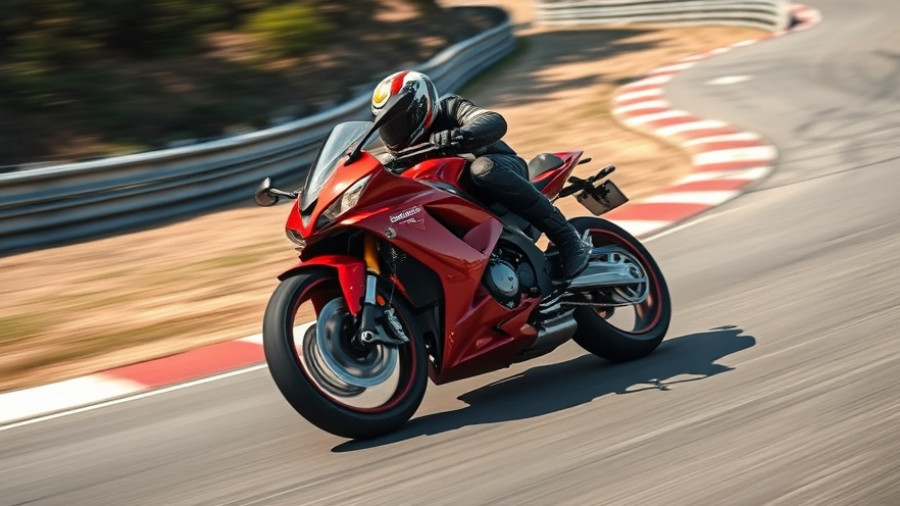
A New Arrival in Luxury Performance: The 2026 AMG E53 Hybrid
The automotive landscape continues to evolve, and the arrival of the 2026 Mercedes AMG E53 Hybrid wagon marks a significant advancement in luxury performance vehicles. As American consumers embrace the return of the wagon, the E53 stands out with a keen pricing strategy, offering an enticing alternative to its German competitors, most notably the BMW M5 Touring and Audi RS6 Avant. With a price tag of $93,350, it positions itself as a more accessible high-performance option, well below the starting prices of its rivals, which are set at $123,900 and $130,700 respectively.
Performance Meets Practicality: A Closer Look
While the E53 does not surpass its rivals in horsepower—delivering a thrilling 577 horsepower compared to 600+ in the M5 Touring and RS6 Avant—it packs enough punch to satisfy enthusiasts. Mercedes claims a 0 to 60 mph time of 3.8 seconds, which, while slightly slower than its competitors, still reflects impressive performance capability for a family-friendly vehicle. This balanced approach to speed and usability is likely to attract consumers seeking a dual-purpose vehicle that excels on both city streets and open roads.
The Technology That Makes It Stand Out
Mercedes has integrated several advanced features into the E53 to enhance driver experience. For example, the vehicle includes a turbocharged 3.0-liter inline-six engine combined with a rear-mounted electric motor, allowing for an impressive electric-only driving range of up to 41 miles. This makes it perfect for short commutes or quick errands, letting drivers minimize their environmental footprint without sacrificing luxury. Additionally, buyers can choose between two well-equipped trims: Exclusive and Pinnacle, each offering upscale features like a panoramic sunroof, a Burmester 4D Surround Sound system, and the MBUX Interior Assistant for intuitive gesture controls.
Luxury with Performance-Centric Features
For track-day enthusiasts, the AMG Dynamic Plus package is a compelling add-on, pushing the E53 to an exhilarating 604 horsepower in Race Start mode. This upgrade not only enhances acceleration but also incorporates an electronically controlled limited-slip rear differential, optimizing performance during high-speed maneuvers. This focus on track-friendly features reflects Mercedes' commitment to offering a vehicle that excels not only in luxury but also in driving exhilaration.
The Trend of the Longroof: Why Wagons Are Making A Comeback
The growing interest in longroof models like the AMG E53 hybrid showcases a broader trend in the automotive market. Wagons provide a versatile and practical choice for families and enthusiasts alike, balancing space with performance. With the E53, Mercedes is not just reviving the wagon; it is redefining it for a new generation of drivers who value both performance and everyday usability.
The Unique Appeal of the E53 Hybrid Wagon
This new offering from Mercedes AMG caters to a unique segment of the market. As buyers become more conscious of their carbon footprints, vehicles like the E53, which offer electric-only driving capabilities, are gaining popularity. The blend of luxury and efficiency may just give the E53 an edge over traditional sport sedans, presenting a compelling rationale for families who need space but refuse to compromise on performance.
Future Insights: What This Means For the Auto Industry
The introduction of the AMG E53 hybrid wagon comes at a pivotal moment for the automotive industry, as electric and hybrid vehicles are no longer just niche products but are becoming core offerings across manufacturers. With stringent fuel economy regulations and a growing emphasis on reducing emissions, the blend of performance and hybrid technology in the E53 could signal a significant shift in consumer preference. As more consumers seek out vehicles that align with their values without sacrificing performance, we can expect to see more manufacturers following suit, expanding their wagon offerings to attract a broader audience.
Conclusion: Why the E53 Hybrid Should Be On Your Radar
The 2026 Mercedes AMG E53 hybrid wagon strikes an impressive balance between performance, luxury, and practicality. It boasts a competitive price point that makes it more accessible than some of its most notable competitors, while still delivering a powerful performance package that drivers will appreciate. As automakers like Mercedes lead the charge in reimagining traditional segments through the lens of modern consumer desires, the future looks bright for the wagon—and for those who are lucky enough to get behind the wheel of an AMG E53.
 Add Row
Add Row  Add
Add 




Write A Comment